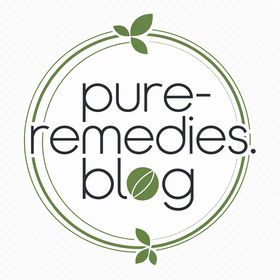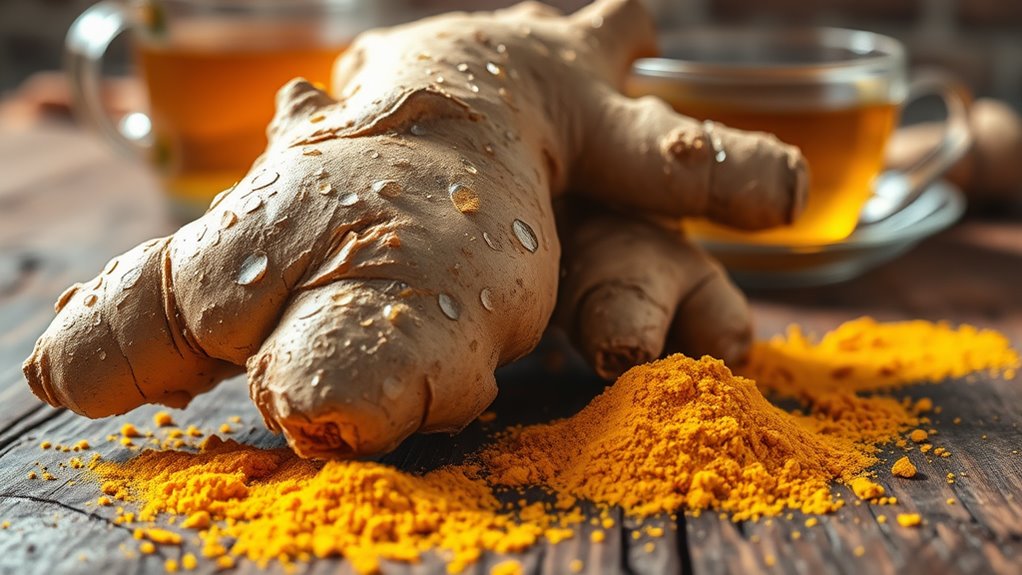The Secret Spice That Helps Beat Headaches Fast
Headaches can disrupt your day, trigger frustration, and diminish your focus. Fortunately, there’s a natural remedy that packs a punch: turmeric. This vibrant spice isn’t just for cooking; it holds powerful anti-inflammatory properties that may alleviate your pain. Curious about how it works and how you can easily incorporate it into your life? Understanding the science behind turmeric and its benefits could lead you to a more effective approach to managing headaches.
Key Takeaways
- Turmeric, with its active compound curcumin, offers natural anti-inflammatory benefits that can alleviate headache symptoms effectively.
- Curcumin reduces inflammation linked to migraines, potentially lowering their frequency and intensity.
- Incorporating turmeric into your diet can be done through food or supplements for targeted headache relief.
- Combining turmeric with black pepper enhances its absorption, maximizing its benefits for headache management.
- Holistic approaches, like combining turmeric with ginger and lavender, further support headache relief and relaxation.
Understanding Headaches: Types and Triggers
Headaches can be a real nuisance, interrupting your daily life and causing discomfort.
Understanding the types of headaches—like tension, migraine, or cluster—can help you identify triggers.
You might notice stress, dehydration, or even certain foods can spark a headache.
To practice effective headache prevention, keep a diary to track your symptoms and potential triggers.
This way, you can focus on trigger avoidance, eliminating or reducing exposure to known culprits. Additionally, employing techniques like pressure point stimulation can provide immediate relief during a headache episode.
The Magic of Turmeric: A Powerful Anti-Inflammatory
Turmeric’s active compound, curcumin, packs a punch when it comes to fighting inflammation, making it a valuable ally in headache relief. Research shows that its anti-inflammatory properties can help reduce the frequency and intensity of headaches. To harness its benefits, it’s essential to know how to use turmeric effectively and the right dosage for optimal results. Additionally, curcumin’s bioavailability can be enhanced by combining turmeric with black pepper, making it even more effective in alleviating headaches.
Turmeric’s Active Compound
Curcumin, the potent active compound found in turmeric, has garnered attention for its remarkable anti-inflammatory properties.
Derived from the plant origins of Curcuma longa, curcumin stands out among curcumin derivatives due to its ability to modulate inflammatory pathways effectively.
Research shows that it can inhibit pro-inflammatory molecules, providing a natural alternative for managing discomfort.
By incorporating turmeric into your diet, you can harness the power of curcumin and potentially alleviate headache symptoms.
Whether in spice form or as a supplement, this golden ingredient could be your secret weapon against inflammation and pain, leading to a more comfortable, headache-free life.
Anti-Inflammatory Benefits
How can something as simple as a spice transform your approach to inflammation? Turmeric, rich in curcumin, offers powerful anti-inflammatory properties. Incorporating it into your diet can enhance your overall health, especially when combined with regular exercise and improved sleep quality.
| Benefit | Exercise Benefits | Sleep Quality |
|---|---|---|
| Inflammation Reduction | Boosts recovery time | Enhances restorative sleep |
| Pain Relief | Improves flexibility | Reduces sleep disruptions |
| Joint Support | Increases endurance | Supports deep sleep |
| Overall Wellness | Promotes vitality | Regulates sleep cycles |
Usage and Dosage Guidelines
Unlocking the potential of turmeric as a powerful anti-inflammatory agent hinges on understanding the right usage and dosage.
For effective headache relief, aim for 500-2,000 mg of turmeric extract daily, ideally in divided doses.
To enhance absorption, combine it with black pepper or healthy fats.
Always follow safety guidelines, especially if you’re pregnant, nursing, or on medications.
Store your turmeric in a cool, dark place to maintain its potency and freshness.
Remember, individual responses vary, so start with a lower dose and adjust as needed.
Consulting a healthcare professional before starting any new supplement is always a wise choice.
How Curcumin Works to Alleviate Pain
Curcumin, the active compound in turmeric, packs a powerful punch against pain thanks to its anti-inflammatory properties.
By reducing inflammation and acting as a potent antioxidant, it can effectively relieve headaches and other types of pain. Additionally, incorporating pressure point techniques along with curcumin can enhance overall headache relief.
Understanding the right dosage and consumption methods can help you harness curcumin’s benefits for your relief.
Anti-inflammatory Properties Explained
Ever wonder why some natural remedies are more effective than others in managing pain?
Curcumin, the active component in turmeric, has powerful anti-inflammatory properties that can help alleviate headaches.
It targets specific pathways linked to inflammation, addressing the underlying causes of pain often exacerbated by autoimmune links and environmental factors.
By inhibiting pro-inflammatory cytokines, curcumin reduces swelling and discomfort, making it a valuable ally for those suffering from chronic headaches.
Incorporating this spice into your diet may provide the relief you need, allowing you to tackle pain more effectively and enjoy a better quality of life.
Antioxidant Effects on Pain
How does curcumin’s antioxidant power play a role in pain relief?
Curcumin, found in turmeric, fights chronic inflammation by neutralizing free radicals, which cause oxidative stress.
This stress often contributes to pain and discomfort.
By incorporating antioxidant foods like curcumin into your diet, you can help reduce inflammation and alleviate pain more effectively.
Studies show that curcumin’s unique ability to lower inflammatory markers in the body can lead to significant improvements in conditions associated with persistent pain.
Dosage and Consumption Methods
Wondering how to effectively incorporate curcumin into your routine for maximum pain relief? Start with a daily dosage of 500-2000 mg, depending on your needs. You can enjoy curcumin through teas or supplements, but brewing techniques matter! Here’s a quick guide:
| Method | Dosage | Storage Advice |
|---|---|---|
| Tea | 1 tsp/day | Cool, dark place |
| Supplements | 500-1000 mg | Airtight container |
| Golden Milk | 1 cup/day | Refrigerate for 3-5 days |
Incorporating Turmeric Into Your Diet
Incorporating turmeric into your diet can be a delicious way to harness its powerful anti-inflammatory properties. You can easily achieve culinary integration by adding turmeric to soups, stews, and stir-fries.
Try pairing it with black pepper, which enhances its absorption, or mix it into smoothies for a health boost. Turmeric also complements flavors like garlic, ginger, and citrus, making it versatile in various dishes.
Consider making golden milk by mixing turmeric with milk and spices for a soothing drink. Experiment with these flavor pairings to enjoy the health benefits of turmeric while enhancing your meals. Additionally, research indicates that natural remedies for migraines can provide effective relief for those seeking alternatives to medication.
Scientific Studies Supporting Turmeric for Headache Relief
Research increasingly backs the use of turmeric for headache relief, highlighting its potential benefits in alleviating pain.
Several studies suggest that curcumin, the active compound in turmeric, may reduce inflammation and serve as a natural analgesic.
However, study limitations such as small sample sizes and short durations can affect the reliability of these findings.
It’s essential to acknowledge that more comprehensive research is needed to fully understand turmeric’s efficacy for headaches.
Future research should focus on larger, long-term trials to establish dosage guidelines and confirm its benefits, ensuring you have the best evidence to support your pain management strategy. Additionally, natural remedies such as turmeric may provide a complementary approach to traditional treatments for migraines.
Other Natural Remedies to Complement Turmeric
Are you looking for additional natural remedies to enhance the pain-relieving effects of turmeric? Consider incorporating ginger into your routine. Ginger benefits include reducing inflammation and alleviating headaches, making it a perfect partner for turmeric. You can enjoy it in tea, supplements, or fresh slices. Another option is lavender oil, known for its calming properties. Inhaling lavender oil or applying it topically can help ease tension and promote relaxation, further supporting headache relief. Additionally, ginger and lavender tea has been historically used as an ancient natural remedy for migraine relief. Combining turmeric with ginger and lavender oil creates a powerful, holistic approach to managing headaches while boosting your overall well-being.





